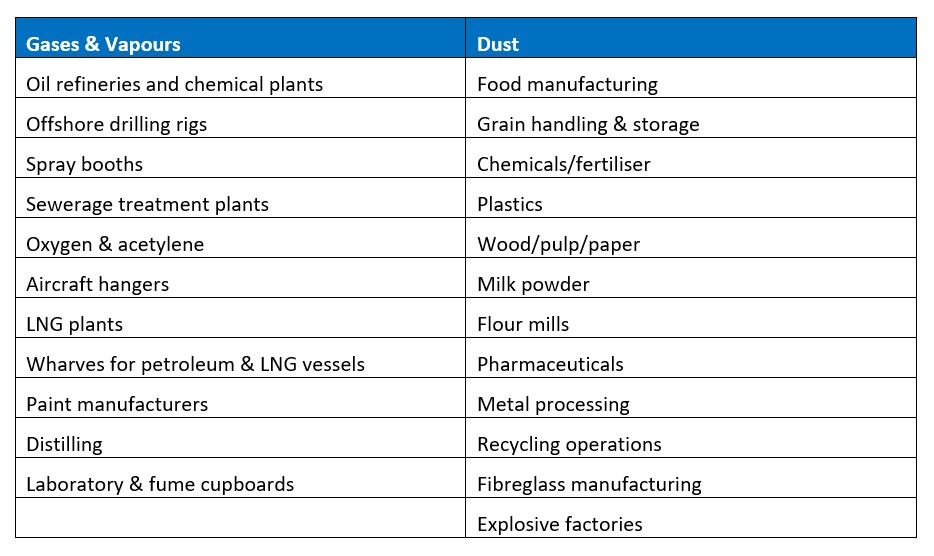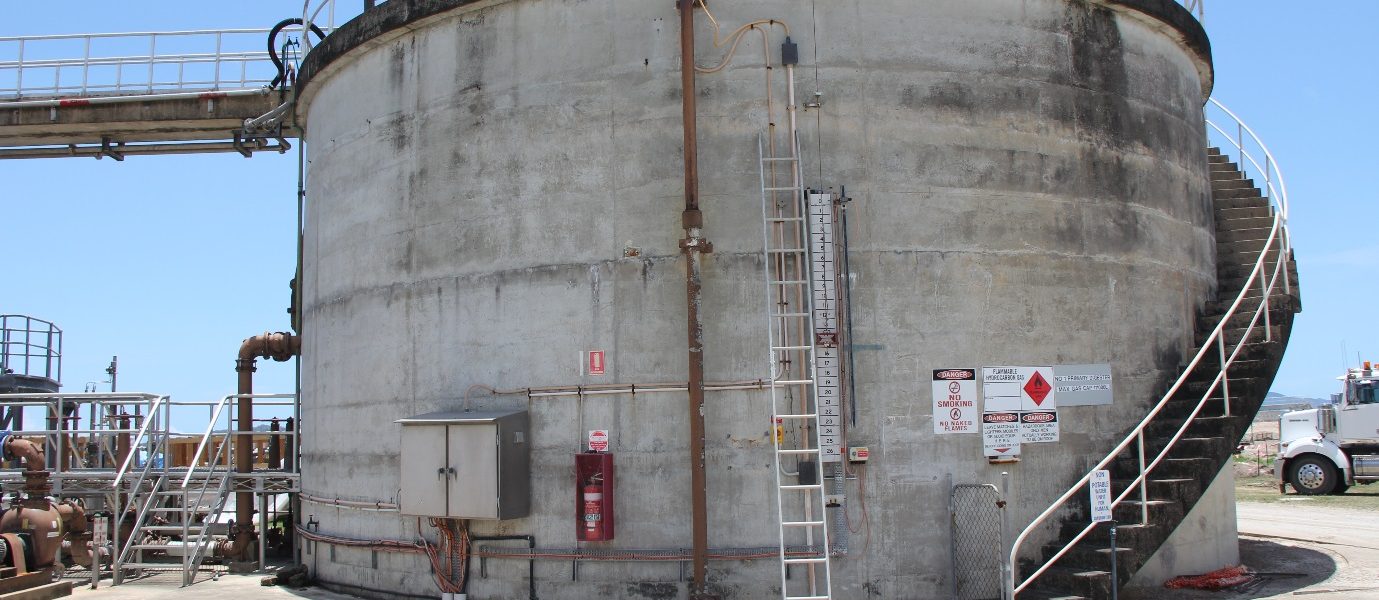Get This Report about Roar Solutions
Get This Report about Roar Solutions
Blog Article
Excitement About Roar Solutions
Table of ContentsThe Main Principles Of Roar Solutions The Greatest Guide To Roar SolutionsThe Best Guide To Roar Solutions
In order to shield setups from a potential explosion an approach of evaluating and classifying a potentially dangerous area is called for. The objective of this is to make certain the proper choice and installation of tools to inevitably avoid an explosion and to guarantee security of life.
(https://lnk.pblc.app/pub/f49b043987c7b7)
No tools should be set up where the surface temperature level of the devices is above the ignition temperature of the given danger. Below are some typical dirt dangerous and their minimal ignition temperature level. Coal Dirt 380C 225C Polythene 420C (thaws) Methyl Cellulose 420C 320C Starch 460C 435C Flour 490C 340C Sugar 490C 460C Grain Dirt 510C 300C Phenolic Material 530C > 450C Aluminium 590C > 450C PVC 700C > 450C Soot 810C 570C The chance of the threat existing in a concentration high adequate to trigger an ignition will differ from place to location.
In order to categorize this risk a setup is divided into locations of danger relying on the amount of time the unsafe exists. These locations are referred to as Areas. For gases and vapours and dusts and fibres there are three areas. Area 0 Zone 20 An unsafe ambience is highly likely to be existing and may be existing for extended periods of time (> 1000 hours each year) and even continually Area 1 Zone 21 A harmful atmosphere is possible but unlikely to be existing for extended periods of time (> 10 450 C [842 F] A category of T6 means the minimum ignition temperature is > 85 C [185 F] Harmful location electrical devices perhaps designed for usage in greater ambient temperatures. This would certainly showed on the score plate e.g. EExe II C T3 Ta + 60C( This implies at 60C ambient T3 will certainly not be surpassed) T1 T1, T2, T3, T4, T5, T6 T2 T2, T3, T4, T5, T6 T3 T3, T4, T5, T6 T4 T4, T5, T6 T5 T5, T6 T6 T6 A T Class score of T1 indicates the optimum surface temperature level created by the tool at 40 C is 450 C. Thinking the connected T Class and Temperature ranking for the tools are ideal for the location, you can constantly make use of a tool with an extra strict Division rating than required for the location. There isn't a clear solution to this inquiry. It actually does depend on the kind of tools and what repair work need to be accomplished. Tools with particular test procedures that can not be done in the area in order to achieve/maintain 3rd party rating. Should return to the manufacturing facility if it is before the tools's service. Field Repair By Authorised Personnel: Complicated screening might not be called for nevertheless specific procedures may require to be adhered to in order for the tools to maintain its third party rating. Authorized personnel must be utilized to carry out the work properly Fixing need to be a like for like replacement. New element should be taken into consideration as a direct substitute needing no special screening of the tools after the repair is full. Each tool with an unsafe rating must be assessed individually. These are described at a high degree listed below, however, for more thorough details, please refer directly to the guidelines.
Not known Facts About Roar Solutions
The devices register is an extensive data source of tools records that consists of a minimum collection of fields to identify each thing's place, technological criteria, Ex-spouse classification, age, and ecological information. The ratio of Thorough recommended you read to Close evaluations will certainly be established by the Devices Threat, which is examined based on ignition threat (the probability of a resource of ignition versus the likelihood of a flammable ambience )and the harmful location category
( Zone 0, 1, or 2). Executing a durable Risk-Based Assessment( RBI )method is important for ensuring compliance and security in managing Electric Tools in Hazardous Areas( EEHA).
Not known Incorrect Statements About Roar Solutions

In regards to explosive threat, a dangerous area is an atmosphere in which an eruptive atmosphere exists (or may be expected to be present) in amounts that require special safety measures for the building and construction, installation and usage of devices. eeha training. In this post we discover the challenges dealt with in the office, the threat control procedures, and the required expertises to work safely
It issues of contemporary life that we manufacture, keep or handle a range of gases or liquids that are deemed flammable, and a variety of dirts that are regarded flammable. These materials can, in particular problems, form eruptive ambiences and these can have significant and heartbreaking effects. Most of us are familiar with the fire triangular remove any one of the three elements and the fire can not take place, but what does this mean in the context of hazardous locations? When damaging this down right into its most basic terms it is essentially: a combination of a particular amount of release or leakage of a specific material or product, blending with ambient oxygen, and the visibility of a source of ignition.
In many circumstances, we can do little regarding the levels of oxygen in the air, but we can have significant influence on sources of ignition, for instance electric tools. Unsafe areas are documented on the harmful location category illustration and are recognized on-site by the triangular "EX LOVER" indicator. Here, among other key details, areas are split into 3 types depending upon the risk, the possibility and period that an explosive atmosphere will exist; Zone 0 or 20 is considered one of the most unsafe and Zone 2 or 22 is regarded the least.
Report this page